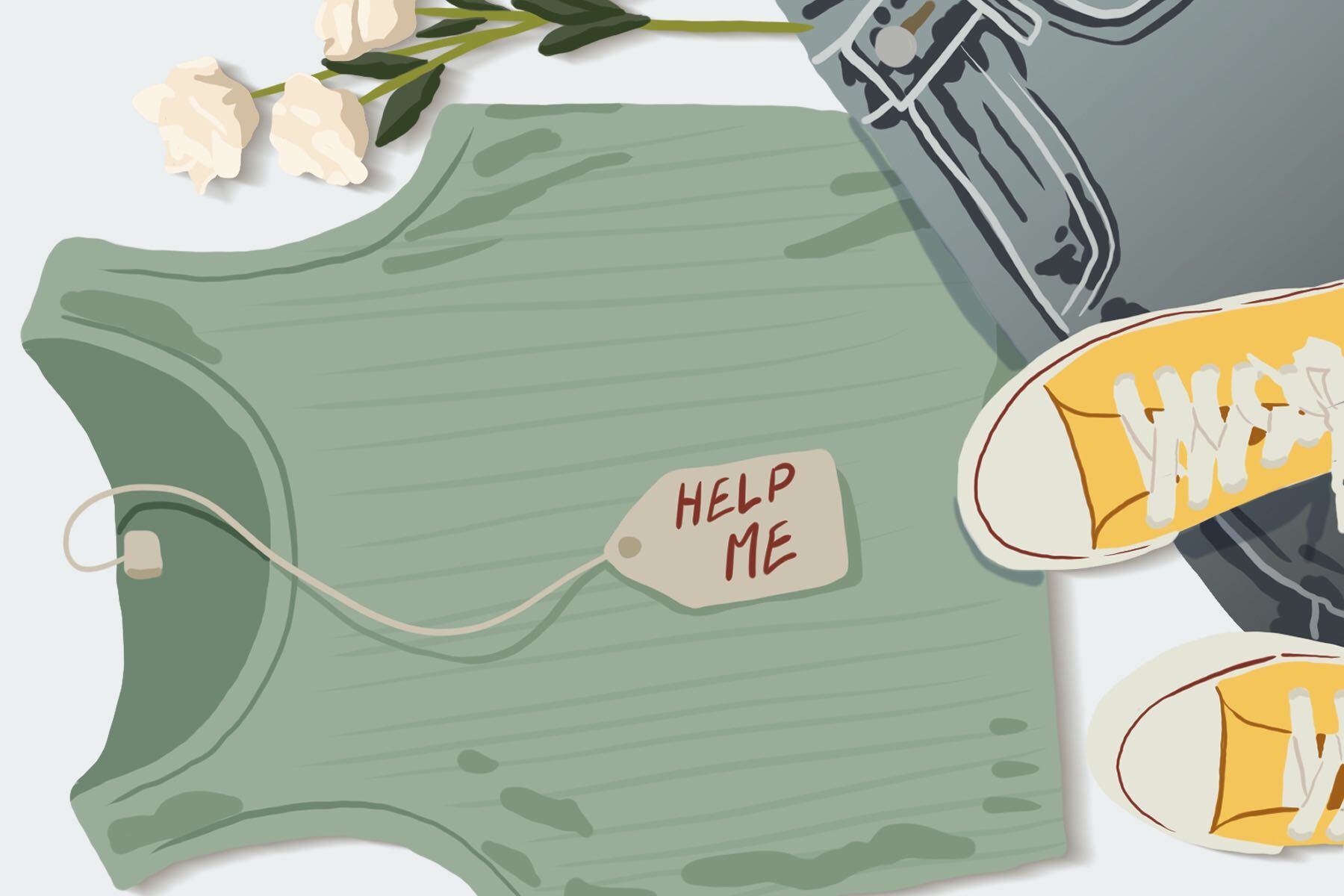A strange new phenomenon has reportedly been exposed, mainly on TikTok and Instagram. People are reportedly finding ominous messages such as “HELP ME” or “NEED YOUR HELP” written on the care tags of clothing bought from online fashion retailer Shein. These messages are thought to be from the factory workers desperately reaching for help through the products they manufacture. This conspiracy theory has gained a lot of traction online due to the numerous videos apparently exposing hidden messaging in tags and packaging.
Speculation started brewing last May when user @nohreo15 posted a video to TikTok compiling images of these messages. This video amassed more than 40 million views and inspired viewers to examine their own Shein purchases for these messages. Soon, the number of videos would grow and gain a substantial audience committed to exposing Shein and the distressing cries for help. Numerous users looked through the care tags of their Shein clothing to reveal the hidden help messages. Some would say “I have dental pain” and other similarly concerning phrases. Others reported finding handwritten “help” messages on their packaging or “S.O.S.” scrawled on scrap paper. This growing conspiracy would spur many to call for a boycott of Shein and other fast fashion retailers, citing these messages as evidence of the inhumane working conditions of those employed by Shein’s factories.
Shein has recently become a fast fashion empire, surpassing the moguls H&M and Zara according to a recent report from Earnest Research. As of June 16, Shein comprised 28% of U.S. fast fashion sales, making it the leading fast fashion brand in the nation, even ahead of longtime brands such as Forever 21 and Fashion Nova. Insiders say that much of Shein’s success can be attributed to the rise of digital consumerism. Shein’s online store offers an extensive selection of trendy fashion for men, women and children, as well as accessories and other goods. All of these products are offered at a price that seems too good to be true — and they are.
Since its founding, Shein has faced many allegations surrounding the unsafe working conditions of its manufacturers. As Business of Fashion reported last year, Shein partner factories treat employees abhorrently. The Swiss watchdog group Public Eye went undercover at 17 factories that supplied Shein and its parent company Zoetop: The group found that workers were subjected to 12-14 hour work days and often worked 28 days each month in windowless, heatless rooms. These workers give up their whole lives to the factory and yet are still paid unlivable wages.
While the brand itself is valued at $100 billion as of April 2022 according to Bloomberg, workers are barely paid enough to support themselves and their families, keeping them virtually enslaved to the company. Additionally, the employees are paid per item to incentivize even longer hours. This means that even after completing a garment, workers may not receive payment for their time if the piece is rejected for quality or other reasons. Additionally, if there is no work to be done, then workers do not receive pay, meaning there is no security for the minimal wages that workers receive, all while the company itself makes billions.
In response to this investigation, Shein has still not provided any further transparency regarding the details of its supply chain. The reply was simply: “SHEIN has no comment at this time as we await a copy of the report and an opportunity to review. We take all supply chain matters seriously and look forward to hearing back.”
To make matters worse, allegedly many of Shein’s workers are children. Naturally, Shein denies these claims. On its social responsibility page, Shein claims: “We strictly abide by child labor laws in each of the countries that we operate in. Neither we nor any of our partners are allowed to hire underage children.” However, many of its policies and conduct lack transparency, and the company offers no details as to how it is keeping this promise. Much of the production of Shein’s merchandise occurs in Bangladesh, in which many children as young as six work full-time, according to a recent study. While the legal working age is 14, the government lacks the labor inspectors or other officials necessary to enforce the law, meaning this rule is widely ignored. These conditions are the same in many of the regions where fast fashion factories are located. Shein’s dirt cheap prices are very likely possible due to the hands of children.
With such evidence pointing to Shein’s inhumane workplaces, it is not hard to imagine that these hidden messages truly are the attempts of its workers trying to draw global attention to their inappropriate treatment. Still, the company disputes the conspiracy. In June, it responded with a TikTok video that attempted to debunk the claims. Some of the arguments had some footing. One of the images circling in the case against the company was actually received in 2015 by a woman in the Philippines. Another picture was actually a stock photo.
They also released another video in which the company argues that the “NEED YOUR HELP” message seen on care tags was a simple mistranslation, following up with a comment that read: “We also want to make it clear that we have a strict code of conduct for suppliers which forbid them to use forced labor. We want to be honest with our consumers and we thank our customers for their feedback and support.” Still, many people don’t buy these explanations and are adamant that the messages are real. Either way, it is irrefutable that Shein’s workers are subjected to inhumane working conditions, and regardless of if the messages are real or simply a conspiracy, it is important to know the human cost behind the brand’s unbeatable prices.
Fast fashion will always have a place in the market. Cheap prices offer accessibility and inclusivity, making them a phenomenon that is unlikely to be phased out. Therefore, it is vital to examine the industry for what it is: a capitalist powerhouse with those at the top benefiting at the cost of their workers’ vitality. The ebb and flow of fashion trends have real humanitarian consequences that we must keep in mind. We must be more conscious of the purchasing decisions we make.

















